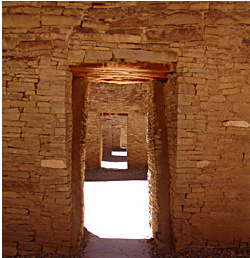Publication Date
7-18-1978
Abstract
The Vore Site is a Late Prehistoric buffalo jump in the northern Red Valley, an open, well-watered valley that encircles most of the Black Hills. Stratified bone middens were found from a depth of about four feet to one of about seventeen feet in the bottom of a gypsum sink one-hundred feet across and fifty feet deep. Two seasons of intensive work excavated about 10,000 cubic feet of material, a 5 to 10% sample of the site. Typological evidence, radiocarbon dates and correlation of varved sediments and tree-rings indicate that over twenty separate bone lenses were laid down between about A.D. 1500 and A.D. 1800. Analysis of site materials was a continuation of an extensive Univer¬sity of Wyoming project to study adaptive process on the western Plains. Working from a set of general assumptions regarding the evolution of cultural systems, a broad set of problem areas were outlined that could be approached with the Vore Site data. Some substantive results were obtained, in spite of sample limitations, and theory and method were developed for further recovery of cultural and paleoecological information. In the first chapter, the ecological principles of adaptation to the shortgrass ecosystem are reconstructed in detail, and supported with hypothetical data on shortgrass biomass, buffalo carrying capacities and aboriginal territory sizes and population densities. The second chapter documents the site stratigraphy, possible ethnohistoric associations and other information, such as the tentative chronological and climatic analysis of the varved sediments. The third chapter reports the results of analysis of 850 bison mandibles recovered at the site. Inferences are given regarding seasonality of the kill and age and sex structure of the herds preyed upon. A comparative analysis of Bison molar morphology from eight kill sites, spanning 10,000 years, is used to develop a methodology for paleoecological reconstruction. Lithic assemblages were subjected to detailed analysis in the fourth chapter, and data and conclusions are presented, including a brief functional analysis of chipped stone butchering tools, and a functional and stylistic analysis of projectile points. After graphic treatment of point attributes and attribute indices to document trends in point morphology, factor analysis was used to study covariant attribute structure, and discriminant analysis was used to study stylistic change through the site sequence. In the final section, a methodology is developed for using the quarry sources of lithic assemblages to draw cultural inferences. Projectile point assemblages from the ten kill sites, ranging from Paleo Indian to Protohistoric, are compared using this method. Conclusions are - offered regarding the territory, degree of mobility, social centralization, ¬and population movements of the site peoples.
Project Sponsors
The National Science Foundation (GS 28641)
Document Type
Dissertation
Degree Name
Anthropology
Level of Degree
Doctoral
Department Name
Anthropology
First Committee Member (Chair)
William James Judge
Second Committee Member
Lewis Roberts Binford
Third Committee Member
George C. Frison
Fourth Committee Member
Richard Allan Barrett
Recommended Citation
Reher, Charles A.. "Adaptive Process on the Late Prehistoric Shortgrass Plains: Archaeological Study of the Vore Site, a Buffalo Jump in the Black Hills of Northeast Wyoming." (1978). https://digitalrepository.unm.edu/anth_etds/194

